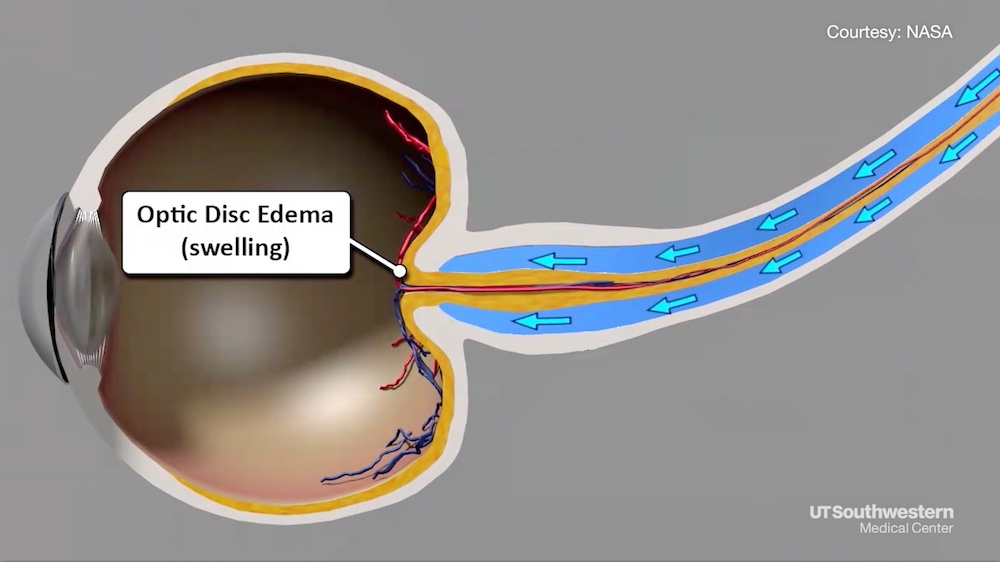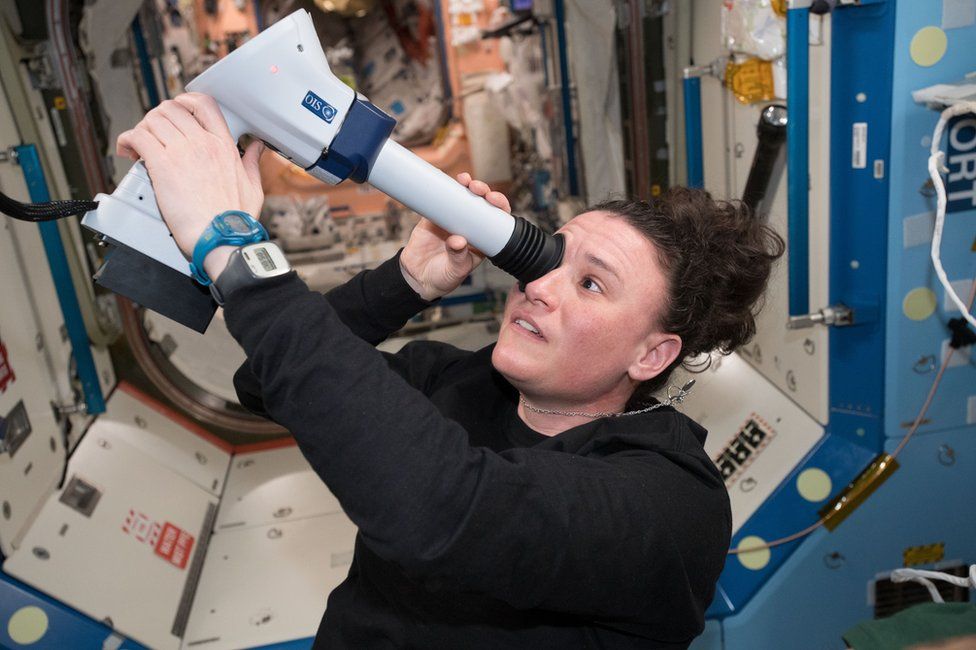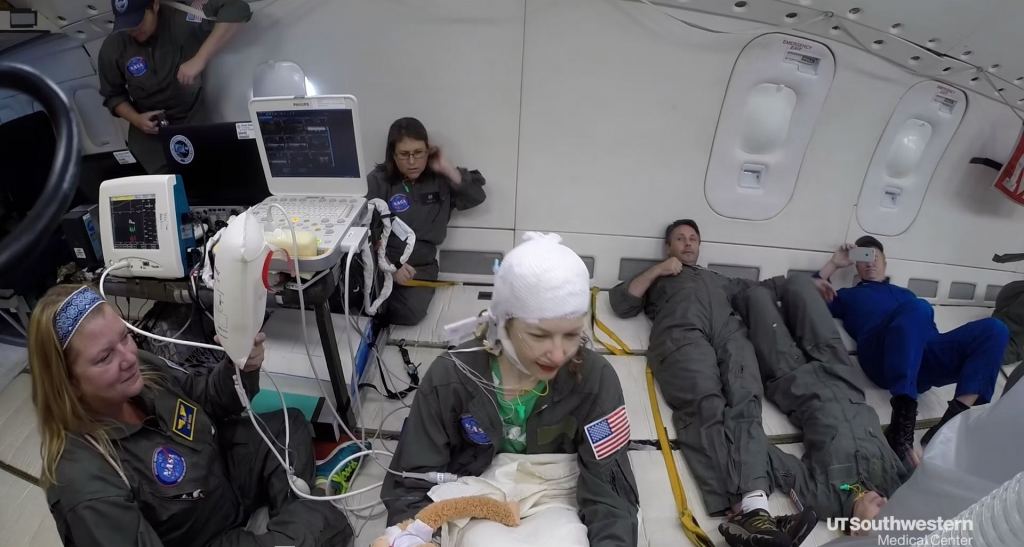As any good cardiologist would tell you, blood flow is key to your health. They probably won’t tell you that gravity is key to blood flow. But that’s probably because they don’t usually have to deal with patients that aren’t subject to gravity. When people are no longer subject to gravity, such as astronauts resident on the ISS, that lack of gravity can become a problem, especially when dealing with sensitive soft tissues such as the eyes. To solve that problem, a team of scientists and engineers have the University of Texas Southwestern have developed a special type of sleeping bag that might help astronauts with their blood flow issues caused by gravity, and potentially get their sight back.
One of the many indignities that isn’t much discussed in spaceflight is that more than half of the astronauts living on the space station for more than six months have suffered from vision problems. The problems appeared to be related to a condition called spaceflight-associated neuro-ocular syndrome, or SANS. It occurs when a person’s eyeball is flattened by consistent pressure from their circulatory system.
 Depiction of the problem astronauts face with blood flow to their eyes in space.
Depiction of the problem astronauts face with blood flow to their eyes in space.
Credit – NASA / UT Southwestern
It might not only be the eyes that are impacted by this pressure. Some astronauts suffer from a condition known colloquially as the “space stupids,” where they make simple mistakes that they feel they would not have made back on Earth. Since the brain could suffer from the same pressure affecting the eyes, the underlying cause of SANS might have even more deleterious effects than originally thought.
Luckily, for those of us still Earthbound, gravity helps pull the blood, causing the pressure down to the rest of our bodies, allowing time for our brain and eyes to recover while standing or sitting up. However, doctors can replicate the effects of SAN by requiring a patient to lay prone in a bed for slightly more than three days.
 The problem with being in orbit during medical check-ups is sometimes you have to do your own. Here astronaut Serena Auñón-Chancellor examines her eye with a “funduscope” on the ISS.
The problem with being in orbit during medical check-ups is sometimes you have to do your own. Here astronaut Serena Auñón-Chancellor examines her eye with a “funduscope” on the ISS.
Credit – NASA
Dr. James Leidner, an internal medicine hospitalist, volunteered for this arduous task and spent three days on his back in bed trying to replicate the condition. He did so twice, with researchers measuring his brain activity at the end of each three-day period. He was fitted by a specially designed sleeping back for eight hours a night during the second experiment.
That sleeping bag was designed by Dr. Benjamin Levine and his team of specialists in astronaut health. It is intended to force bodily fluids to move into the lower body, relieving the pressure they cause on the brain and eyes. To do so, it compresses the legs in a pattern to force blood to flow more directly to them, distributing the blood more like t would be on Earth.
 Other experiments were conducted on cancer patients who had a brain port.
Other experiments were conducted on cancer patients who had a brain port.
Credit – UT Southwestern / NASA
The improvement in brain function in Dr. Leidner and other volunteers was notable, but Dr. Levin and his team weren’t satisfied. To prove their solution would work in zero gravity, they used a very specific test group – cancer survivors who happened to have a port directly into their brain that would allow the UTSouthwestern team to directly measure their brain pressure.
These brave volunteers agreed to take zero-gravity flights while hooked up to a specialized pressure sensor that would monitor the pressure on their brain in real-time. Researchers could then see the direct impact of the sleeping bag on brain pressure in zero gravity – even if it was only for a few seconds at a time.
Astronaut Chris Hatfield demonstrates the traditional way of sleeping in space.Credit – Canadian Space Agency YouTube Channel
This might seem like a lot of work to try to solve a problem that only a handful of people have ever experienced. But SANS will become more and more of an issue, especially if NASA and the commercial companies it supports plan on actually sending a person to Mars. Any such trip would take at least two years, and while some of that time might be spent in gravity, much of it would not be. If the astronauts cannot see by the time they get to the red planet, the mission itself could be a complete disaster.
If the solution is as simple as sleeping in a specially designed bag, then that’s one less thing the planners of that mission will have to worry about. And it appears that it might indeed be that simple – Dr. Levine believes his team’s invention might indeed solve the problem of SANS. But it still needs to be tested in the actual environment. NASA is very supportive of his efforts, so in the not too distant future, expect to see an astronaut taking a nap in what might look to outsiders like a giant ice cream cone, but could potentially help them keep their ice sight when they need it most.
Learn More:
UT Southwestern – High-tech sleeping bag could solve vision issues in space
Engadget – NASA’s new sleeping bags could prevent eyeball ‘squashing’ on the ISS
CNN – A special sleeping bag could help astronauts with vision issues in space
UT – Special Skinsuits Could Help Astronauts Avoid Back Pain When Their Spines Expand In Space
Lead Image:
Dr. James Leidner volunteered for a special kind of sleep study.
Credit – UT Southwestern

